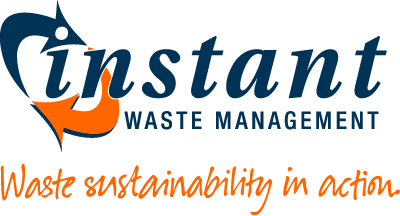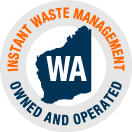What type of bin service is best for my business?
06 July 2022
This article is designed to assist you in deciding the best waste service solution for your business.
The process can be broken down into the following two parts:
- Assess what type of waste your business will be generating; then
- Assess whether there are any site or user issues to be considered.
What type of waste will you generate?
If you are generating any type of construction products or construction waste, you will require either a Skip Bin or a Hook Bin. These bins are designed to hold construction waste material that is solid and typically heavy in nature such as concrete, bricks, sand and metals.
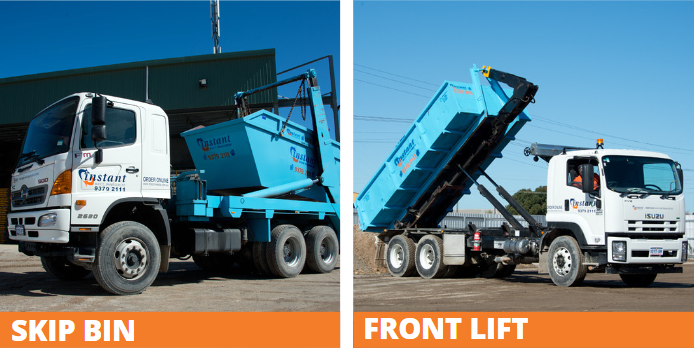
If you’re producing waste that is compactable in nature such as food waste, packaging, paper, carboard and plastic, then a Front Lift Bin or a Rear Lift bin (i.e. wheelie bin) may be better for your business.
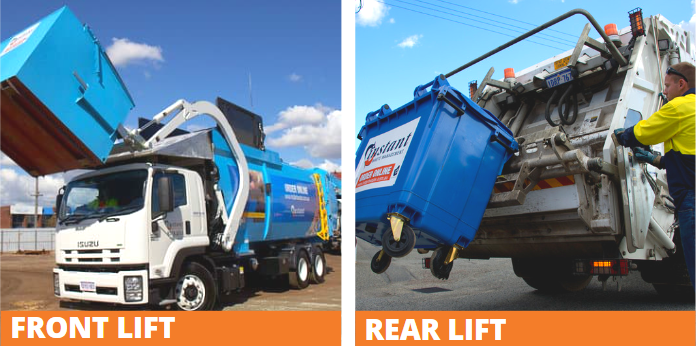
On occasion you may have waste stream that is not appropriate to be placed in one of these bins and as a result a special bin may be required. These typically include any waste material that is hazardous to the environment such as asbestos waste, chemicals, oils, paint, tyres, and batteries.
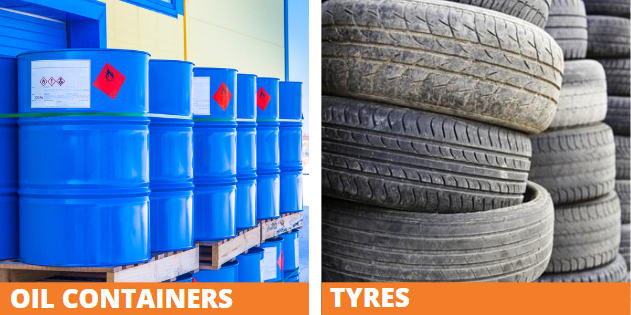
The following table is a quick reference in assessing which type of waste bin is typically best suited for each waste stream.
Skip / Hook Bin
- Concrete
- Bricks
- Sand
- Timber
- Glass
- Carpet & Textiles
- Metals
Front Lift / Rear Lift Bin
- Food & Other Organic Waste
- Packaging (e.g. polystyrene)
- Plastics
- Paper & Cardboard
Special Bin Services
- Tyres
- Oils
- Asbestos
- Liquids
- Batteries
- Chemicals
Site and/or User Issues
When assessing what type of Skip Bin or Hook Bin to order, generally you should consider the volume of waste that will be generated and the available site footprint on which the bin will be placed.
As a rule, the larger the bin the more economical the service rate. For example, if you have 10m3 of waste to remove, it’s cheaper to order 1 x 10m3 skip bin rather than 5 x 2m3 bins.
However, if your site is restricted by space, you may have no choice but to order multiple smaller bins to make up for the volume of waste.
When deciding whether a Front Lift or Rear Lift bin service is better for your business, you may wish to consider the following.
- How much waste does your business produce weekly?
- Are there site restriction issues?
- Will the bin need to be moved around the business premises?
- Other issues relevant to your site or users (e.g., staff and customers)?
Volume of Waste Generated Weekly
The more waste you generate, the larger the bin and/or frequency of services will be required.
If you’re unsure exactly how much waste your business will generate, a simple comparison to what you generate at home could assist.
For example, most councils will offer a 240 litre (or thereabouts) wheelie bin service. If you estimate your business generates 10 to 15 times more than you do at home on a weekly basis, this means your business would be generating around 2,400 to 3,600 litres of waste per week.
Your waste service needs could be met in any number of ways including having a single large bin (e.g., a 3m3 Front Lift Bin) that is serviced once per week or several smaller bins that are serviced once per week.
As with skip bins, the best priced alternative will generally be the arrangement that requires the largest bin with least number of services. However, having a large bin on site may not be appropriate and you may need to consider other factors.
Site Restrictions
On occasion, there may be site restrictions that will prevent you or your waste management service provider from accessing a large bin in a safe manner.
If access to your bin is restricted by height or width, you may have no other option but to use a rear lift bin service with more frequent services. Rear Lift trucks are typically smaller making them suitable for narrow sites (or site with height restrictions). In addition, smaller bins are generally easier to move to a position where the truck can service the bin in a safe manner (e.g. moved away from parked cars to an open area accessible by the truck).
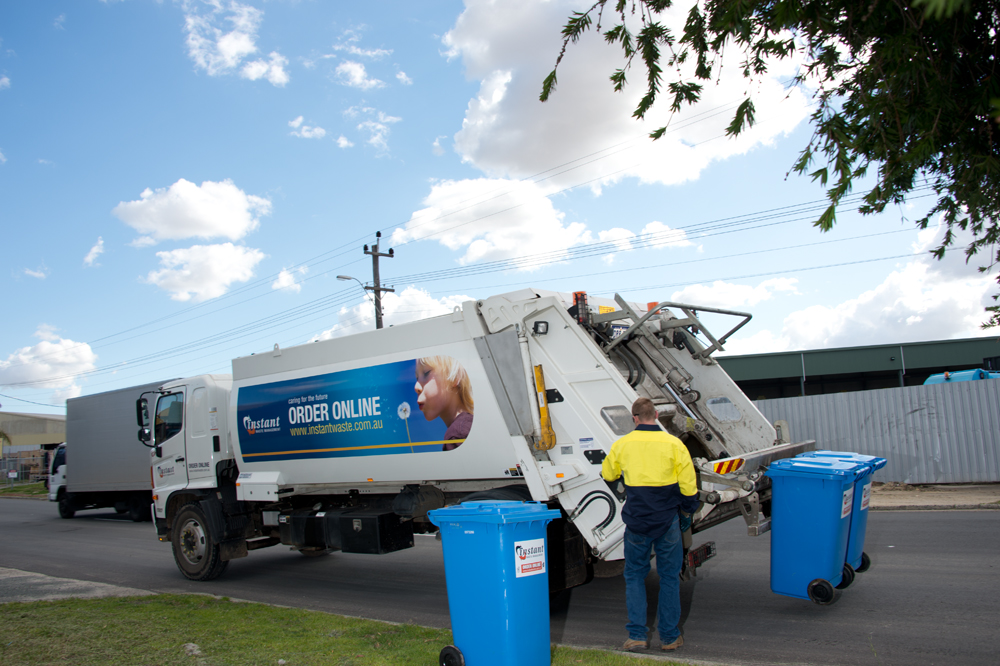
Bin Usage Throughout The Day
Some of our clients like the flexibility of having a bin near their workstation, then either presenting the bin to our truck when full or emptying the bin into a large on-site bin that is emptied by our truck.
The following two examples illustrate what you can do in your business:
- Place multiple 240L bins around various workstations that are later tipped (by your staff) into our front lift bins that are on a scheduled service day; or
- Place multiple 660L and/or 1100L bins around various workstations that are taken outside and placed in an appropriate position on the bin service day.
Issue relating to your site
Finally, there may be issues relating to your site that may favour one waste service over another. For example, rear lift bins are made of plastic whereas as front lift bins are made of steel. There may be a need to use a plastic bin solution in your business (e.g., to mask the smell of waste) and accordingly, although the large bin may be a more cost-effective solution, you may have no alternative but to go with a plastic bin’s solution.
Still Unsure
If your still unsure what bin solution is best for your business, please contact us for a free on-site consultation by filling in our enquiry form or call 9379 2111.

